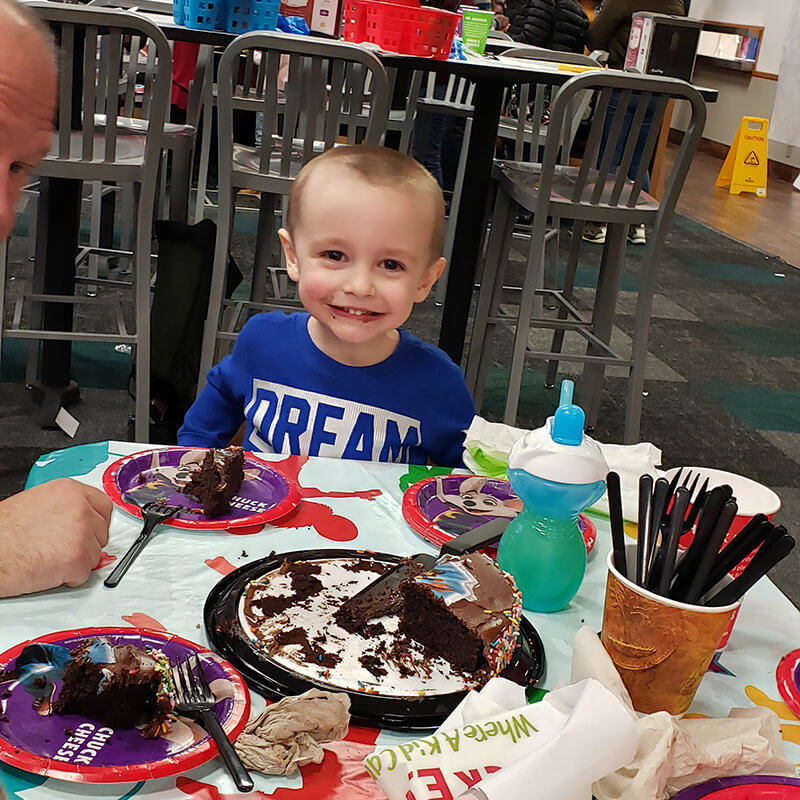For some families, it might seem like the struggle will never end. Feeding issues, communication challenges, interfering behaviors or all of the above can put a strain on kids and their parents. The good news? There is hope for a brighter future.
That hope may not come in a traditional package, but a center-based service mix of a diagnostic evaluation, applied behavior analysis (ABA therapy) and other autism therapies at Hopebridge can lead to skills and smiles families may not have thought possible in their lifetimes, let alone years, months or even weeks, in some cases.
At barely 2 years old, one child, Michael Wayne, came to Hopebridge’s center in Carmel, Indiana for a diagnostic assessment. This seemingly fragile little guy coped with other medical concerns, in addition to his new autism spectrum disorder (ASD) diagnosis that followed the evaluation.

Michael enjoying chocolate cake!
Most of Michael Wayne’s challenges centered around feeding. When he started at Hopebridge, he only drank one flavor of Pediasure from a specific bottle, while sitting up in a Pack ‘n Play with particular sheets and a blanket. If this exact experience didn’t take place, he would not eat. At the time, Michael Wayne was not verbal and was terrified of other children. Being around other kids would lead him to drop to the floor crying, often vomiting from being so physically upset, which would in turn hinder his nutrition.
Within just a year, life has changed for the now 3-year-old Michael Wayne. This small but mighty little boy has “grown” in more ways than one.
It started with Hopebridge’s team giving him a private space in the center in an effort to desensitize certain environments and situations. From there, his therapy team – led by BCBAs Amy Miller and Clarissa Merchant – worked with him to begin greeting other adults he was not familiar with, then introducing him to other children by having them hand preferred toys to him and vice versa. Most of the program focused on working with him to tolerate small bits at a time.
What does success currently look like for Michael Wayne? He still drinks Pediasure as his main source of nutrition, but Amy works closely with his gastrointestinal doctor to venture into the world of solid foods, starting with items like crackers, noodles and chocolate. He attends snack time with peers and circle time with to sing songs as a group. He labels items, answers questions, follows directions and uses two- and three-word phrases; even saying, “Good job, Michael Wayne!” when his therapy team cheers for him. He shares a treatment room with two other children, and if directed, he will hug or high five friends, which is something that previously frightened him. If he sees another child crying or having a tantrum, it may still upset him, but he has learned to soothe himself in these cases.
Michael Wayne still has more progress ahead of him, but he is moving along through his steps and making so many gains along the way!If you want to see what success can look like for your own child, don’t wait. Early intensive behavioral intervention is crucial in these early developmental years, so fill out the form to contact our Hopebridge Carmel center and help your kiddo lead a better, more fulfilling life…s